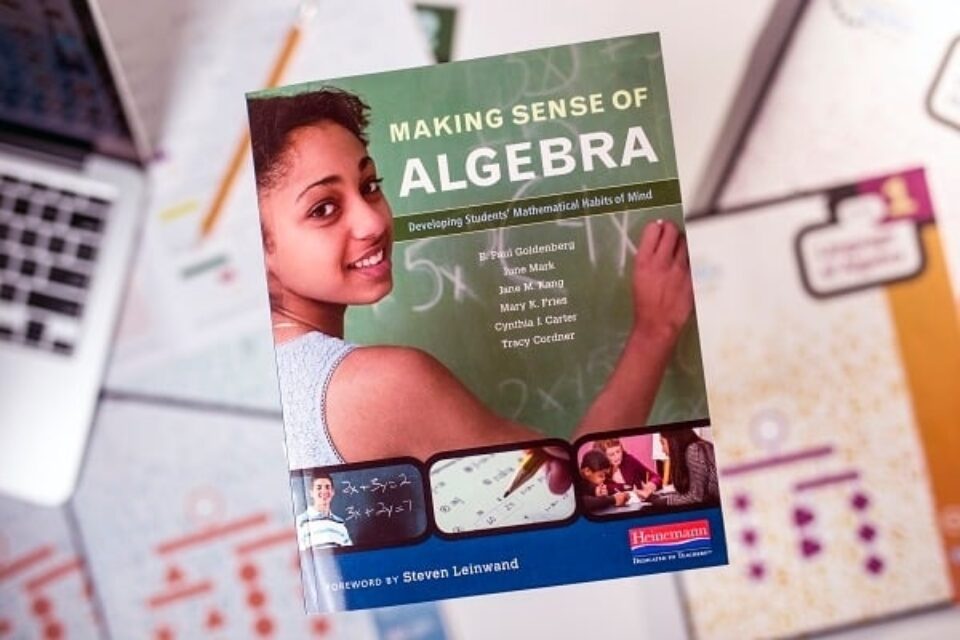
Today’s blog, which is adapted from the new book Making Sense of Algebra, looks at how “mathematical authority” can impact how students feel about and learn mathematics—and how handing the authority back to students is essential for developing their confidence and engagement.
Handing Mathematical Authority Back to Your Students
By Paul Goldenberg, June Mark, Jane Kang, Mary Fries, Cynthia Carter, and Tracy Cordner
Having mathematical authority means recognizing that we can establish the truth or falsity of mathematical ideas through our own logic, without appealing to outside authorities like the teacher or the text. For very many students—and not just those who find mathematics difficult—the idea that they are allowed, and able, to establish truth is a total surprise. Often, even when they believe that their answer is correct, they will respond in a questioning tone as if appealing to your authority to evaluate the correctness of their answer. If you respond, “Well, is that right?” some will restate their answer with more assurance—the questioning tone is really habit, but they did believe this answer to be correct—but many will assume that your question signifies an error. When students look at you instead of at some diagram on the page to see if their answer is right, they’re doing the same thing: it is your assessment of their answer, not their own logic, that they take as authoritative.
As teachers, we may unintentionally and unconsciously propagate this kind of thinking by our own feeling that we need to have the answers (rather than thinking them out), or by answering questions students could solve on their own (confirming our authority), or by feeling undermined when students challenge our reasoning (worrying about losing our authority).
There are ways of handing mathematical authority back to the students. Allow students to discuss and ruminate without your input, even if they ask for it. Allow them to tell you how to approach a problem. Make a point of not always knowing the answer, or telling students how you came to understand a topic. “Actually, I’ve forgotten. Let’s see if we can figure this out without looking it up.” And when looking up information seems the best choice, look it up in front of students, or better, have students look it up. Or try, in a serious and non-staged way, to say, “Well, how can we see if that’s correct?” or “Two answers have been offered. Are they both correct? What can we do to decide?” or even “How might we attack this problem if we were the very first ones to solve it, and so we did not already have someone else’s technique to use?”
Don't be reluctant to let students go home with ideas that are not yet entirely correct.
Providing closure in each lesson clearly has many advantages, but also some disadvantages. Don’t be reluctant, after a good but incomplete discussion, to let students go home with ideas that are not yet entirely correct. Most students, given the time and experience, begin to recognize that in mathematics, as in life, not all discussions wrap up all the loose ends neatly, and they manage the small amount of tension in not having “settled” things by continuing to think long after the discussion is over. In the beginning of setting up this culture, it is not uncommon for students to be surprised, and perhaps upset, that an idea that the group worked out was not entirely correct, or at least not corrected by the teacher. For a few students, the lack of resolution creates more tension than they can get used to, and you need to notice and adjust accordingly, but most, over time, begin even to enjoy the idea of occasional cliff-hangers. And when they come back with new thoughts, acknowledge how glad you are that they continued thinking about the issue and give the class time to continue the discussion now that a student has brought in a new idea. This models how mathematics is done by real mathematicians and makes it clear that students have a genuine role in the thinking about and doing of mathematics in the classroom.
In showing that we are all incomplete mathematical beings, you show students that although they may not be as far in their mathematical development as you are, they can get there if they give themselves the time to talk and try things.
♦ ♦ ♦ ♦
 Paul Goldenberg, June Mark, Jane Kang, Mary Fries, and Tracy Cordner work in the Learning and Teaching Division at Education Development Center (EDC), a non-profit organization that designs, implements, and evaluates programs to improve education, health, and economic opportunity worldwide. Cynthia Carter is a mathematics teacher at The Rashi School in Massachusetts.
Paul Goldenberg, June Mark, Jane Kang, Mary Fries, and Tracy Cordner work in the Learning and Teaching Division at Education Development Center (EDC), a non-profit organization that designs, implements, and evaluates programs to improve education, health, and economic opportunity worldwide. Cynthia Carter is a mathematics teacher at The Rashi School in Massachusetts.


